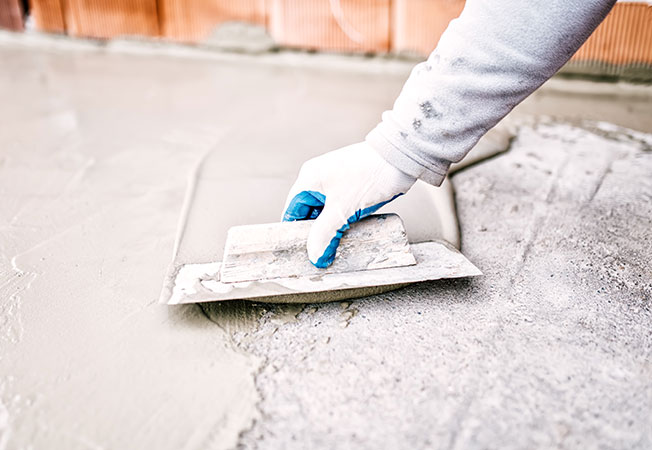Kinds of Waterproofing: Checking Out the Various Techniques and Their Applications
Waterproofing is an important facet of construction and maintenance. It safeguards structures from the damaging impacts of water damages. There are a number of techniques available, each with its special applications and benefits. From membrane layer systems to cementitious remedies, comprehending these alternatives is crucial for effective application. The option of waterproofing technique can considerably affect sturdiness and long life. Checking out these numerous techniques exposes their distinct benefits and prospective challenges, triggering additional factor to consider of perfect options.
Membrane Layer Waterproofing Solutions
Membrane waterproofing systems offer as an important obstacle versus water invasion in numerous structures. These systems commonly are composed of thin sheets made from materials like rubber, polycarbonate, or asphalt, which are applied to surfaces to stop dampness penetration. They can be installed above or below grade and are specifically effective in locations susceptible to high water direct exposure, such as cellars, roofs, and foundations.The installation procedure includes cleaning the substrate, applying adhesives or guides, and exactly suitable the membrane to ensure complete protection. Membrane systems can be either totally stuck, mechanically affixed, or laid loose, depending upon the particular demands of the task. They use longevity and versatility, accommodating architectural activities without jeopardizing their waterproofing capabilities. Moreover, these systems can be strengthened with extra layers for enhanced protection. Inevitably, membrane layer waterproofing systems are crucial for protecting structures against water damages and keeping lasting honesty.
Liquid-Applied Waterproofing Coatings
Liquid-applied waterproofing finishings provide a versatile solution for safeguarding surface areas from water seepage - Landscape drainage Omaha. These coverings are composed of fluid products that, when applied, develop a seamless, flexible membrane layer. Their versatility permits application on different substratums, consisting of concrete, steel, and wood. The finishings can be made use of in varied settings, from residential to industrial settings, making them ideal for roofs, foundations, and below-grade structures.One significant advantage of liquid-applied coverings is their capability to satisfy irregular shapes and permeate fractures, producing a durable obstacle versus wetness. They usually display outstanding adhesion properties and resistance to UV radiation, making sure longevity and longevity. Additionally, the application procedure is usually simple, enabling for fast installation and reduced labor prices. This technique additionally minimizes the threat of water merging, as the continuous layer effectively routes water far from vulnerable locations. Generally, liquid-applied waterproofing finishings are an effective selection for detailed water security
Cementitious Waterproofing Solutions

Cementitious waterproofing options supply a robust choice for structures requiring reliable dampness security. These systems mainly utilize a mix of cement, sand, and chemical additives to produce a water resistant barrier. They are typically applied to surfaces such as concrete wall surfaces, structures, and floorings, offering a durable, durable defense against water intrusion.One of the key advantages of cementitious waterproofing is its convenience of application; it can be applied using a brush, roller, or spray, making it ideal for different job sizes. Furthermore, this method works with many surface areas and can usually be used together with various other waterproofing techniques.Cementitious remedies are specifically efficient in environments where water direct exposure is an issue, such as basements or below-grade structures. Their exceptional bond properties guarantee that they bond well with substratums, giving a solid and nonporous layer versus wetness infiltration.
Bentonite Waterproofing
Bentonite waterproofing is a very reliable method that utilizes salt bentonite clay to develop a natural obstacle against water. This method exploits the unique buildings of bentonite, which increases upon call with water, sealing any kind of prospective leakages and protecting against moisture infiltration. It is commonly utilized in various applications, consisting of structure walls, passages, and maintaining wall surfaces, where water resistance is essential.Bentonite can be applied in several types, such as panels or coverings, giving flexibility in installment. Its capacity to self-seal makes it an eye-catching option for locations subject to moving soil or changing water degrees. In addition, bentonite waterproofing is ecologically pleasant, as it is an all-natural product that does not present damaging chemicals right into the environments.
Drainage and Outside Waterproofing Equipments
Effective waterproofing typically entails a mix of strategies, consisting of drainage and external systems. Water drainage systems, such as French drains and sump pumps, are made to reroute water away from frameworks, lowering hydrostatic pressure against foundations. These systems are important in preventing water accumulation that can lead to architectural damage and mold and mildew growth.External waterproofing, on the other hand, entails using safety barriers to the structure's outside. Methods such as the setup of waterproof membranes, layers, or sealants can help prevent water seepage. This approach not just shields the foundation however also improves the total longevity of the structure.Together, water drainage and exterior waterproofing systems create a comprehensive remedy to handle water efficiently. By applying these techniques, building proprietors can guard their financial investments against the damaging results of dampness, making sure long-lasting security and safety for their buildings.
Regularly Asked Concerns
How Do I Select the Right Waterproofing Approach for My Job?
Picking the right waterproofing approach depends upon variables such as job kind, ecological conditions, budget plan, and preferred longevity. Reviewing these facets permits informed decisions customized to certain demands and needs.

Can Waterproofing Be Applied in Cold Weather Issues?
Waterproofing can be Drainage & waterproofing company Omaha applied in winter problems, however it requires certain materials and strategies. Cold temperature levels may affect healing times and adhesion, requiring cautious choice of products created for low-temperature application.
What Are the Common Signs of Waterproofing Failure?
Typical signs of waterproofing failing include visible water spots, peeling off paint, moist smells, mold development, and splits in walls or structures. French drain installation Omaha. These signs suggest that dampness is penetrating the obstacle, jeopardizing its efficiency
For How Long Does Waterproofing Last Before Requiring Upkeep?
The longevity of waterproofing varies, generally lasting in between 5 to ten years. Aspects such as worldly quality, environmental conditions, and upkeep practices influence its toughness, necessitating periodic assessments to assure effective protection against water invasion.
Exist Eco-Friendly Waterproofing Options Available?
The concern of eco-friendly waterproofing options reveals a growing passion in sustainable materials (Sump pump discharge drainage Omaha). Different natural substances, such as plant-based sealers and recycled items, provide reliable solutions while minimizing ecological influence, interesting eco aware customers